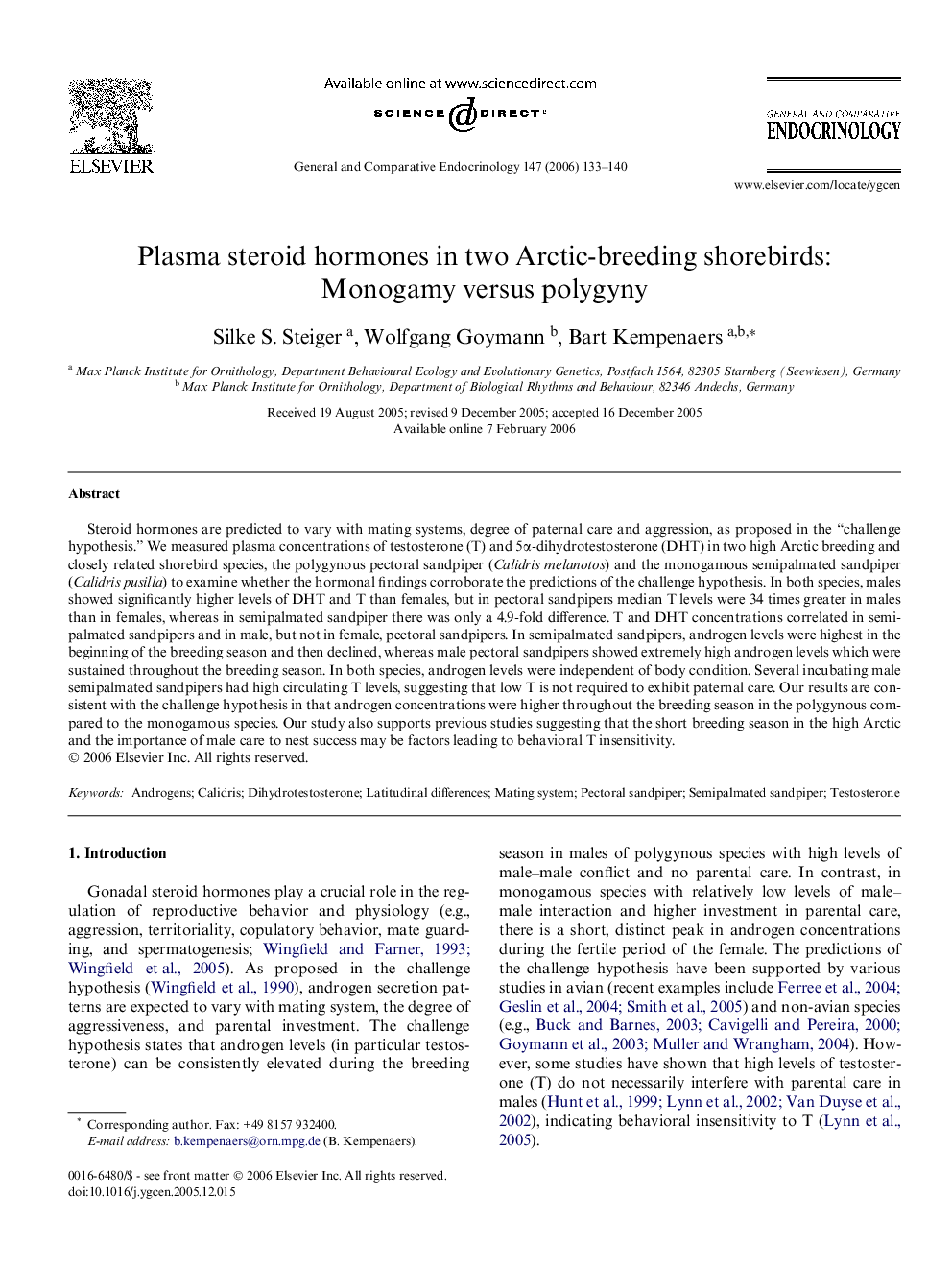| کد مقاله | کد نشریه | سال انتشار | مقاله انگلیسی | نسخه تمام متن |
|---|---|---|---|---|
| 2802259 | 1156194 | 2006 | 8 صفحه PDF | دانلود رایگان |

Steroid hormones are predicted to vary with mating systems, degree of paternal care and aggression, as proposed in the “challenge hypothesis.” We measured plasma concentrations of testosterone (T) and 5α-dihydrotestosterone (DHT) in two high Arctic breeding and closely related shorebird species, the polygynous pectoral sandpiper (Calidris melanotos) and the monogamous semipalmated sandpiper (Calidris pusilla) to examine whether the hormonal findings corroborate the predictions of the challenge hypothesis. In both species, males showed significantly higher levels of DHT and T than females, but in pectoral sandpipers median T levels were 34 times greater in males than in females, whereas in semipalmated sandpiper there was only a 4.9-fold difference. T and DHT concentrations correlated in semipalmated sandpipers and in male, but not in female, pectoral sandpipers. In semipalmated sandpipers, androgen levels were highest in the beginning of the breeding season and then declined, whereas male pectoral sandpipers showed extremely high androgen levels which were sustained throughout the breeding season. In both species, androgen levels were independent of body condition. Several incubating male semipalmated sandpipers had high circulating T levels, suggesting that low T is not required to exhibit paternal care. Our results are consistent with the challenge hypothesis in that androgen concentrations were higher throughout the breeding season in the polygynous compared to the monogamous species. Our study also supports previous studies suggesting that the short breeding season in the high Arctic and the importance of male care to nest success may be factors leading to behavioral T insensitivity.
Journal: General and Comparative Endocrinology - Volume 147, Issue 2, June 2006, Pages 133–140